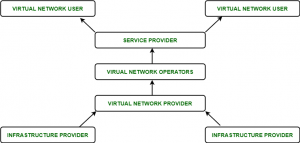Virtualization in Cloud Computing
Virtualization in Cloud Computing
25 May 2023
Virtualization is defined as the creation of different virtual machines from a server or a physical instance using a hypervisor. It’s simply creating a virtual interpretation of storage, operating system, and desktop.
In each and every computer, there are four physical rudiments that are present. They are
- Processor
- Random Access Memory(RAM)
- Read only Memory(ROM)
- Network
In simple words, virtualization is a technology that enables numerous consumers and organizations to share a single physical instance of a resource or an application.
The Concept behind Virtualization
A server is a physical machine that consists of a processor, RAM, ROM, and network. A hypervisor is used on the server to produce virtual machines. The server is the host machine, and virtual machines are the guest machines.
When different clients approach different cloud computing services, the companies give them specific virtual machines with the needed configuration and resources.
Benefits of virtualization
- It lowers the price of the structure
- It increases the productivity
- Multiple operating coffers can be enabled
- Flexible and effective in allocating resources
- Largely scalable
Types of Virtualization
- Application Virtualization: Application virtualization enables the user to have remote access to an application from a server.
- Network Virtualization: With the help of network virtualization, it’s possible to snappily and fluently set up virtual networks, logical switches, routers, and virtual private networks (VPNs).

- Desktop Virtualization: The users’ operating systems can be remotely saved on a server in the data center by virtue of desktop virtualization. In desktop virtualization, the user can virtually access the desktop using a separate machine. Users will need a virtual desktop if they want a particular operating system other than their host operating system.
- Storage Virtualization: An array of computers that are controlled by a virtual storage system is known as storage virtualization. It suitables the operation of storage and use of storage from different sources as a unified depository.
- Data Virtualization: This type of virtualization involves gathering data from different sources and managing it in one position without knowing the specialized details of how the data is gathered, stored, and formatted. The facts are arranged logically so that its virtual view can be penetrated by interested parties and stakeholders, as well as users’ through a variety of cloud services from a distance.
- Server Virtualization: This is a type of virtualization where computer assets are concealed. Then, the identification number, CPUs, and central physical instance are changed to produce different virtual machines. Now each machine can run its own operating system in an independent manner.
Uses of Virtualization
- Virtualization is used for searching organizational data
- Enhances data integration
- Enhances Business integration
Conclusion
Virtualization mainly signifies the running of different operating systems on a single machine. It shares a pool of IT resources, which are then shared, and it profits the business. This is the most efficient and growing area of cloud computing.



